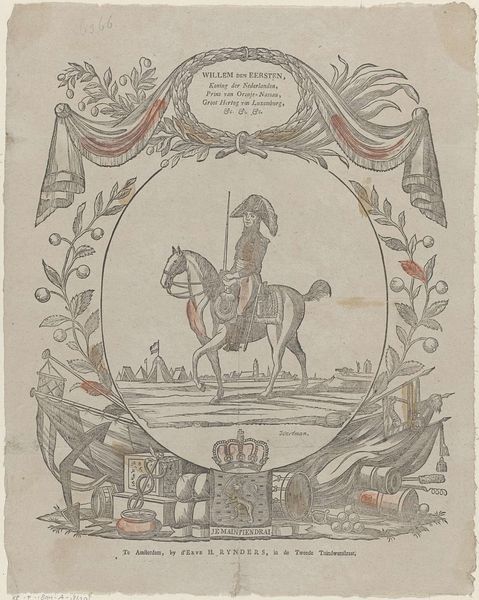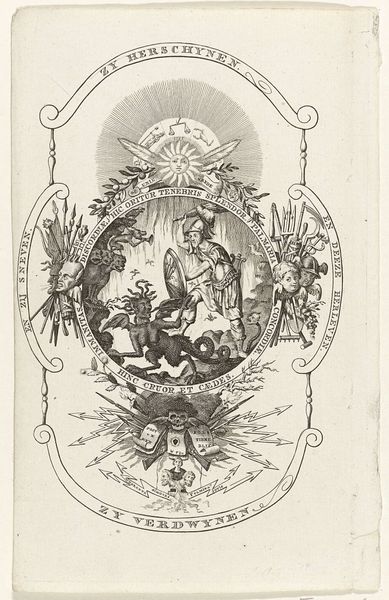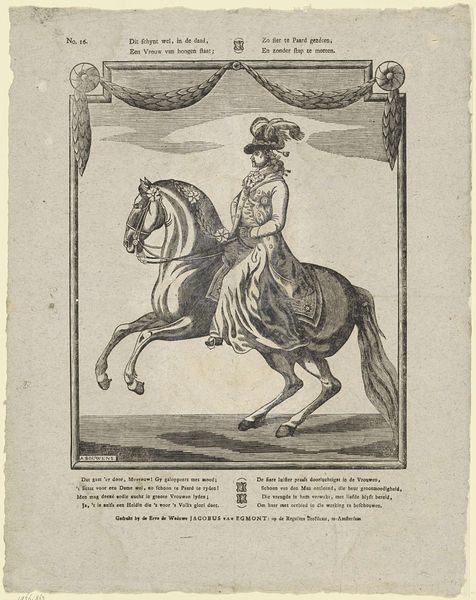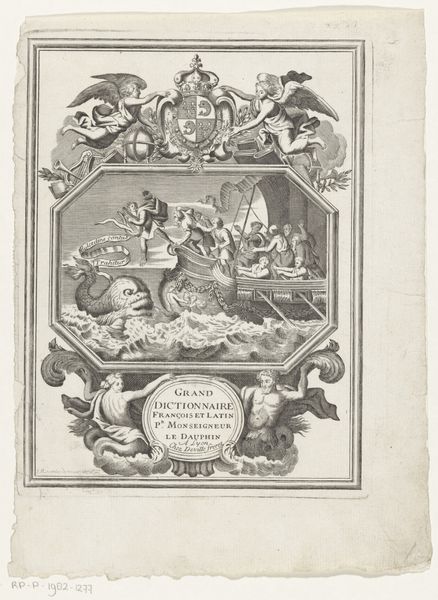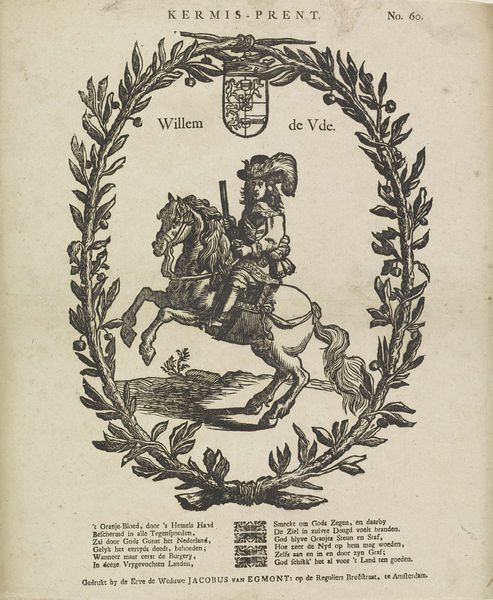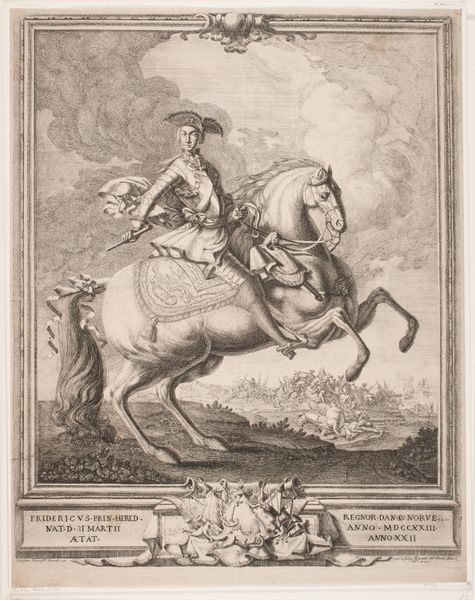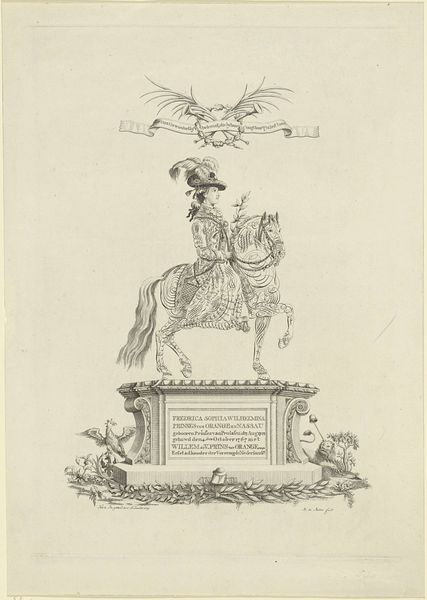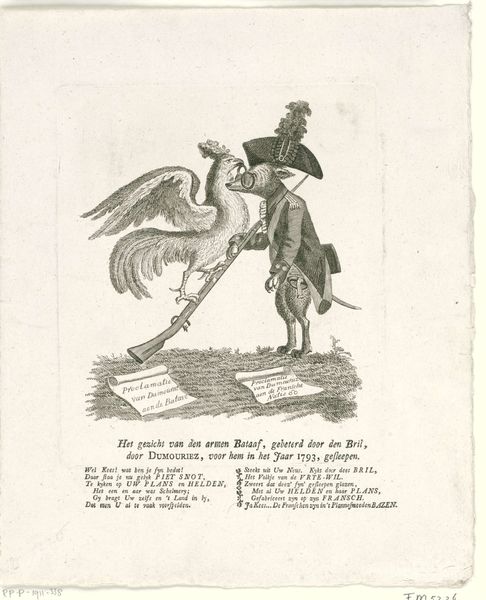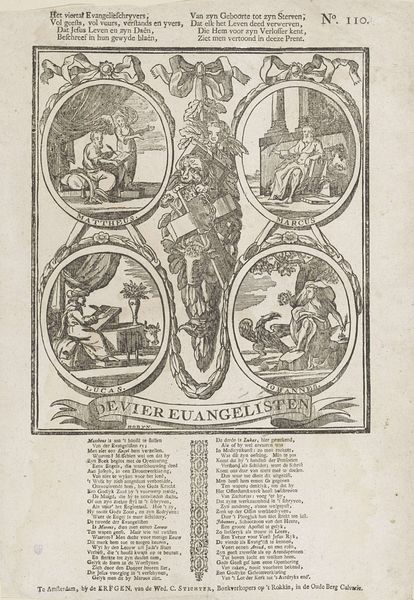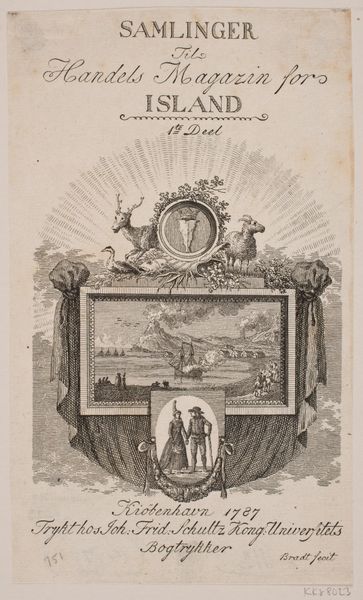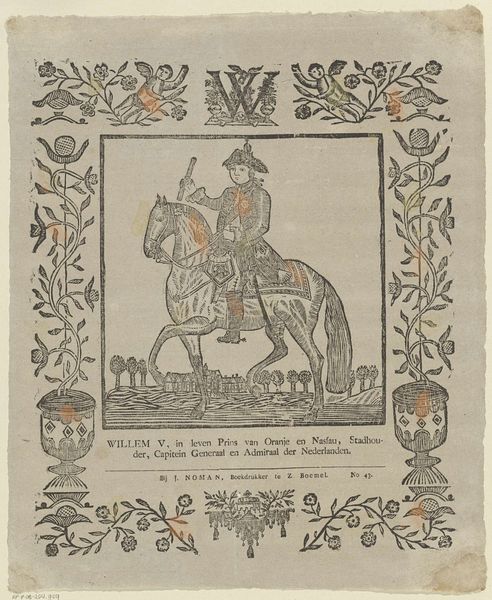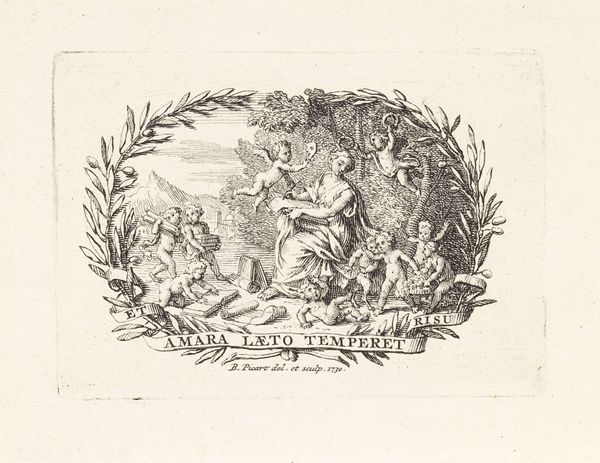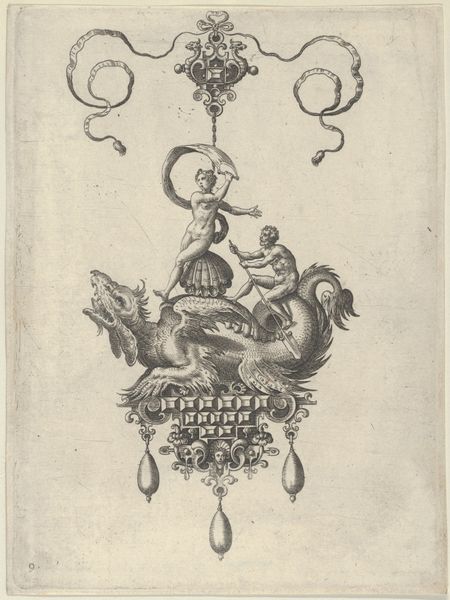
Willem den eersten, / Koning der Nederlanden, / Prins van Oranje-Nassau, / Groot Hertog van Luxemburg, / etc. etc. etc. 1831 - 1854
0:00
0:00
jansroortman
Rijksmuseum
drawing, print, ink, engraving
#
portrait
#
drawing
#
pen drawing
# print
#
pen illustration
#
pen sketch
#
old engraving style
#
personal sketchbook
#
ink
#
ink drawing experimentation
#
pen-ink sketch
#
line
#
pen work
#
sketchbook drawing
#
cityscape
#
history-painting
#
sketchbook art
#
engraving
#
realism
Dimensions: height 412 mm, width 336 mm
Copyright: Rijks Museum: Open Domain
Curator: This is "Willem den eersten," an engraving of King William I of the Netherlands, dating from 1831 to 1854. Made with ink, it shows the king on horseback in a decorative frame. Editor: The details are amazing. I noticed that the scene almost looks like a stage, with all the symbolic objects placed very deliberately around the portrait. I'm wondering what this composition suggests about how the king wished to be viewed by the public? Curator: Good question. Consider the socio-political context. William I ruled during a turbulent period, emerging after the Napoleonic wars. This image is not just a portrait; it's a carefully constructed piece of political communication. The crown, the weaponry, even the inscription “Je Maintiendrai”—French for "I will maintain"—what do those details tell us? Editor: It does feel like he's making a statement about power and stability. But why depict himself on horseback, framed by military equipment and national symbols? Curator: Equestrian portraits have long been used to convey leadership and military strength. Placing the king against a backdrop of tents implies his presence on the battlefield. And don't miss the cityscape – likely The Hague – a symbol of governance and order he intends to protect. This image serves as both a display of power and an assertion of his divine right to rule, doesn't it? The "divine right" aspect is probably being alluded to subtly, as such concepts were out of style in the 19th Century. Editor: Ah, I see. So, the artist uses established symbols to craft an image that reinforces the king's authority and the idea of national strength. Did people question this carefully crafted public image at the time? Curator: Absolutely. The Dutch public had complex opinions about William I's reign, with increasing dissatisfaction over his autocratic tendencies and economic policies. Consider how the rising bourgeois press challenged the government. Images like these become focal points for debating and solidifying views. Editor: That makes perfect sense. Thank you. It's fascinating to think about how much political messaging could be packed into what looks like a simple portrait. Curator: Indeed. By examining the historical context and decoding visual cues, we gain a richer appreciation for art’s role in shaping perceptions and power.
Comments
No comments
Be the first to comment and join the conversation on the ultimate creative platform.
